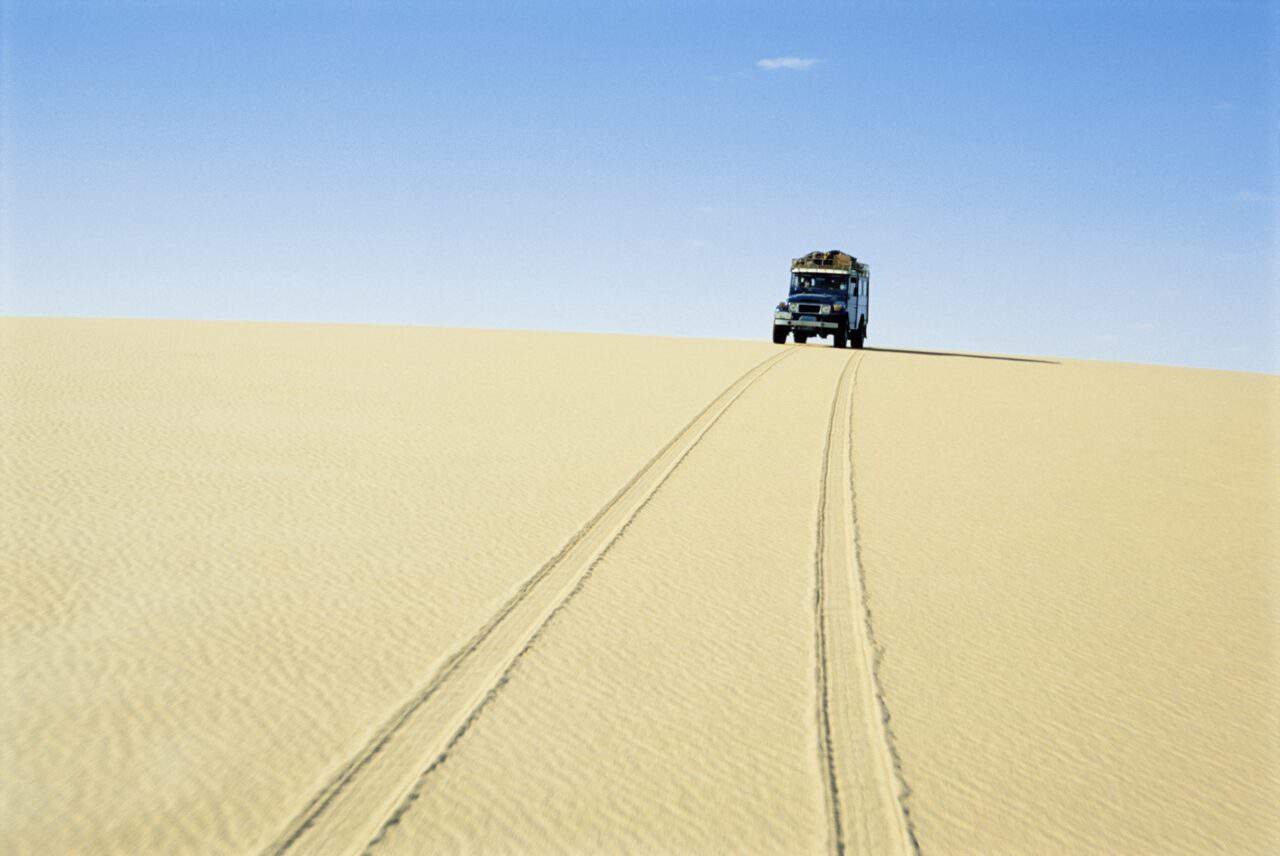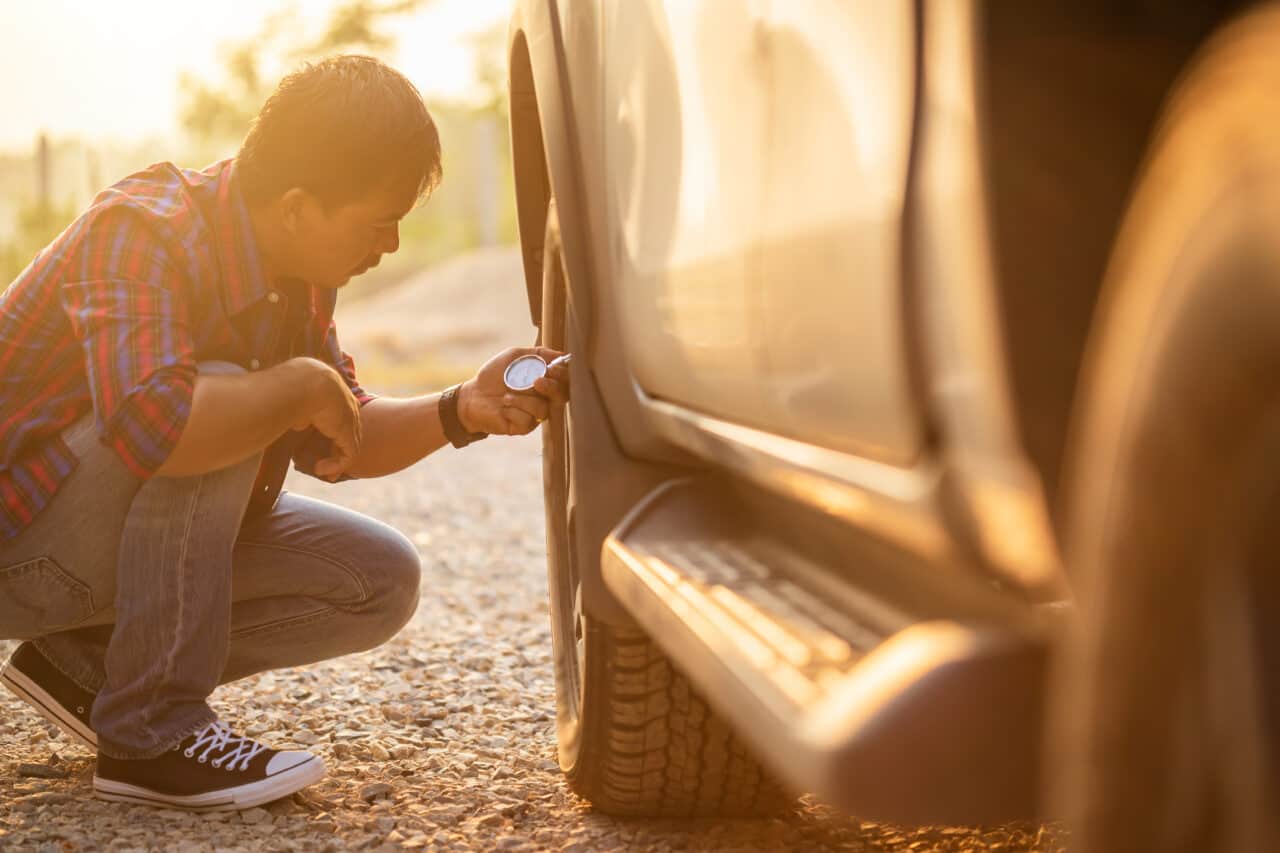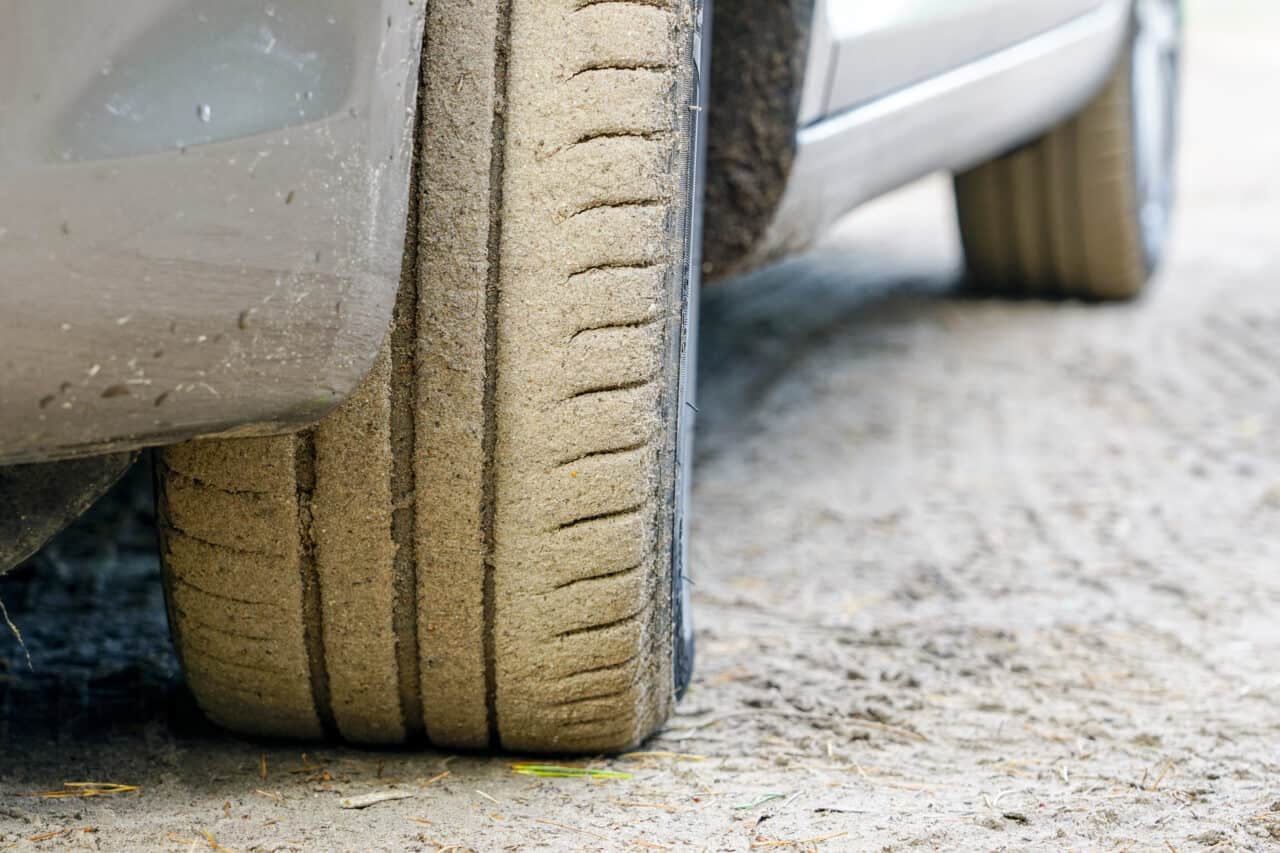Why it is Necessary to Deflate Tires in Soft Sand (Or Snow)

As the seasons change you may find yourself wanting to test out the abilities of your car. This can include traveling up into the mountains through unpaved paths or through endless sand dunes. But it’s best to be cautious with where you want to go, as some terrains are more likely to suck you in than others.
The best trick for getting through ice, sand, or snow unharmed is by airing down the tires of the vehicle by 1/3 (about 15 psi). By creating a wider, larger contact patch, the vehicle can gain more traction, and there is less of a chance that the tires will dig themselves into a hole and getting stuck.
Snow, sand, or mud. They all have the ability to turn a fun outing into a nightmare requiring a tow from a nice stranger or an expensive towing company. Sometimes it can lead to a damaged car. Thankfully, this can be avoided with a few tips and tricks concerning driving through difficult terrain.
Normal Amount of Air VS When Off-Roading
Most 4X4 vehicles these days have tires that built and filled in a way that best suits highway travel. This means they are as narrow as possible to (1) reduce noise friction and (2) improve fuel economy. That way you can have as smooth of an experience as possible on paved roads that doesn’t waste a lot of expensive gas.
The recommended tire pressure, which is measured in psi (pounds per square inch) is between 30 and 35. Any less than that can lead to your tires being wide on the highway. This can easily lead to a blowout, which is when the tire’s sidewalls flex more and the heat builds up within the tire to a point of separation.
If there is too much pressure per square inch in your tires, then the less your tires will touch the ground on the highway. When this happens, it’s more likely that your car will bounce around the road. It will also take much longer to stop, which is always a problem in the world of traffic laws. Especially when it’s snowy or icy outside.
So to keep safe on normal roads, highways, and freeways, keep your psi at around 33. This is especially important to remember if you just got done deflating your tires to get yourself out of a sticky situation on the beach or in the mountains.
How Much Should You Air Down While On Sand or Snow?

A standard rule to follow when finding yourself in need of a little extra help getting your car off of a beach or sand dune terrain is to decrease your psi by 2/3rds of what it normally is. For most cars that means deflating your tires from the recommended 30 psi to 10 psi. In the best of circumstances, you will remember to do this before you drive your car onto sandy terrain.
Something to keep in mind if you’re buying a vehicle in the hopes of crossing some sandy dunes or beaches, taller, is that taller, wider tires a great investment. That means outfitting or buying a car already equipped with tires that are tall/wide enough to get through difficult terrain. The way manufacturers measure tire height and width is through aspect ratio.
The aspect ratio can be complicated to someone who has never had to decipher it before. The most important part to take notice of is the two-digit number that comes after the first slash. In an example, a size P215/65 R15 tire, you would need to focus on the 65. It signifies that the height of the tire is equal to 65% of the tire’s width. The bigger the aspect ratio, the larger the tire’s sidewall will be.
Since tires with an aspect ratio of 50 or lower (such as a 255/50 R 16) naturally have a very low volume of air, they should never be used in soft sand. Seeing as they already are so lightweight and really shouldn’t be aired down, there is no way to protect them against getting stuck.
As for snow, a general rule for safety is to decrease your tire psi by 10-15 pounds. That means if your car is normally 30 psi, you would need to go down to 20-15 psi. This will create a more suitable tire width for snowy terrain, which can be more dense than sand.
Why Do Tires Sink in Snow and Sand?
Essentially, the more narrow something is, especially if it’s moving in a circular motion like a tire would, the more likely it is it will dig itself into a hole. If you’ve ever seen a magician lie down on a bed of nails, you will most likely understand the basic concept. The more distributed an object is across a surface, the less force is applied to any specific area of that object.
When narrow tires sink into snow or sand, it’s also common that the sinking will cause a small berm of snow or sand to form in front of the tire. While the tire can most likely push it forward, it can’t climb it. That’s why when you see someone attempting to get out of a hole in the sand or snow, there will always be someone cautioning the driver not to press the gas pedal too much. More torque means a bigger hole.
While more experienced drivers learned this lesson the hard way, there will always be the natural temptation to speed up. Normally if you want to get up a hill, you need to increase your speed to make up for weight, but when the mountain can slowly disappear right underneath you, it’s an entirely different ballgame.
Tips For Driving in Sand or Snow

As for the driving itself, there are a few tips you can take advantage of so as to avoid getting stuck.
- Check the conditions before you go out! If you want to drive near the waterline, make sure there is enough room to get out, as a rising tide can cause a lot of damage to a stuck vehicle.
- Make sure your coolant is topped off, as a working cooling system is extremely important. Since getting through sand is so difficult for a vehicle, it will run hotter than normal. It’s sort of like how walking through sand requires a lot more energy. The more energy you burn, the more water you will eventually need to drink.
- In sand, be sure to drive as straight as possible! Since driving straight makes your rear tires follow the same track made by your front tires, the road will be more compact and drivable for them. The tighter you turn, the more resistance the sand will be against your back tires.
- Keep your speed constant. Stopping and starting suddenly can bog your tires down.
- Take a shovel or boards with you in case you do get stuck. You can easily dig out the area in front of your tires and place boards in front of it to create an escape route with traction for your car to get out of a hole.
- When soft sand slows you down DO NOT increase your speed. Simply just allow your car to work through the sand slowly. As soon as it gets out of a rough patch it will naturally speed up on its own.
- When you notice one or more tires spinning, get off the gas immediately. The more you accelerate, the more you will dig yourself into a hole.
- If you are driving a manual transmission keep in 2nd gear low range to keep from getting stuck in a sandpit.
- While drivers with automatic transmissions can enjoy any gear, it’s best to keep it in low range, as anything else is more likely to overheat it by way of the torque converter.
Tips For If You’re Already Stuck
Getting stuck can be the worst part of your week. If not scary, it can just be a plain nuisance. But if you find yourself in that situation, here a few tips that can help you keep level-headed and avoid any more damage or time wasted.
- Firstly, avoid the temptation to rock your vehicle from side to side. This can easily damage the transmission and the drivetrain.
- Let out some air from the tires if you are in snow or sand.
- Clear a path around your tires, and if you read the list above, you can now utilize the boards you brought with you that will create a pathway for your car to get out of it’s hole.
- If you don’t have anything you can drive on, simply just wet the sand in front of and under your tires. The wetter sand is, the more dense and drivable it is.
- Don’t floor the gas. This will most likely get one or more of your tires more stuck.
- Get someone to help push your car out of the hole it’s stuck inside.
- And lastly, try your best to keep a cool head. Most people who get stuck make it out soon one way or another, and everything’s going to be okay.
For an example of what it means when people say that acceleration is never a good thing when driving in sand, check out the video below.
